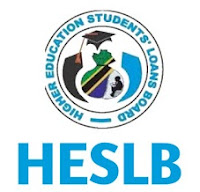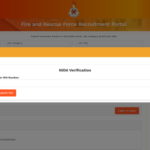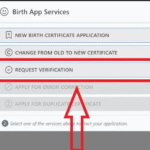A to Z guide for HESLB Loan Application 2025/2026. The Higher Education Students’ Loans Board (HESLB) has officially released its comprehensive guidelines for the 2025/2026 academic year.
For thousands of Tanzanian students, this announcement marks a critical opportunity to access financial assistance for higher education.
This guide is tailored to help you understand how to successfully apply for a HESLB loan, from key dates to eligibility criteria, required documents, and everything in between.
HESLB Loan Application Window 2025/2026
The HESLB loan application for the 2025/2026 academic year will be open from 15th June 2025 and close on 31st August 2025.
During this period, students must apply through the Online Loan Application and Management System (OLAMS) via the official website: www.heslb.go.tz.
It is crucial that all applications are submitted before the deadline. Late applications will not be considered.
Who is Eligible for HESLB Loan 2025/2026?
To qualify for the HESLB loan in Tanzania, applicants must meet the following criteria:
- Be a Tanzanian citizen aged below 35 years.
- Must have secured admission to an accredited higher education institution in Tanzania.
- Be a full-time student with no formal or reliable source of income.
- Must have completed Advanced Certificate of Secondary Education Examination (ACSEE) or its equivalent between 2021 and 2025.
- Must not have defaulted on any previous HESLB loan, unless at least 25% of the loan has been repaid.
These conditions ensure that the loans go to students who truly need financial aid to support their education.
Required Documents for HESLB Loan Application 2025/2026
Before starting the application process on OLAMS, ensure that you have the following documents ready and correctly certified:
- Certified Birth Certificate (and Death Certificate, if applying as an orphan), verified by RITA or ZCSRA.
- Disability Certificate verified by a certified Medical Officer, if applicable.
- TASAF Number for students from socially disadvantaged families.
- Sponsorship Forms or Orphanage Documentation, where applicable.
- National ID, Voter ID, or Driving License for identity verification.
Uploading clear, valid, and certified documents is critical for loan approval. Any falsification may lead to automatic disqualification.
What Does HESLB Loan Cover?
HESLB Tanzania offers loans that cover multiple essential components of a student’s academic life. However, the amounts vary depending on program category and financial need:
Basic Coverage
- Meals and Accommodation – Up to TZS 10,000 per day
- Tuition Fees – Up to TZS 3,100,000 per year
- Books and Stationery – Up to TZS 200,000 per year
Special Faculty Needs
- Special Faculty Requirements – Based on specific course demands
- Field Practical Training (FPT) – Up to TZS 560,000 per year
- Research Expenses – Up to TZS 500,000, especially for final year projects
Priority Groups for Loan Allocation
HESLB prioritizes applicants from vulnerable and disadvantaged groups. These include:
- Orphans (must provide death certificates for both parents)
- Students with certified disabilities
- Students from TASAF-supported families
- Students whose parents are incarcerated
Being in one of these categories does not guarantee a loan, but it significantly improves the chances of approval under HESLB’s equity-based allocation model.
Understanding Programme Clusters and Loan Allocation
HESLB groups academic programs into three clusters, with Cluster One being the highest priority for funding:
Cluster 1 – Highest Priority
- Medicine
- Engineering
- Information and Communication Technology (ICT)
- Education (Science subjects)
Cluster 2 – Moderate Priority
- Agriculture
- Business and Economics
- Law
- Environmental Studies
Cluster 3 – Low Priority
- Arts and Humanities
Students applying for courses in Cluster One have the highest chance of receiving full loan coverage due to the strategic importance of these fields in national development.
Application Process on OLAMS
All HESLB applications must be submitted through the Online Loan Application and Management System (OLAMS). Follow the steps below:
- Visit OLAMS portal.
- Create an account or log in with your existing credentials.
- Fill in personal, academic, and socioeconomic details.
- Upload all required documents in the correct format.
- Pay a non-refundable application fee of TZS 30,000 using a control number generated by the system.
- Print and sign the completed application form.
- Upload the signed form and submit.
Ensure all information is accurate to avoid rejection or legal implications.
Follow-up and Appeal Process
Once the application window closes, loan allocations will be announced through each applicant’s Student’s Individual Permanent Account (SIPA). Students can log in to OLAMS to view their loan status.
If you are unsatisfied with your loan allocation, you can file an appeal between 1st and 15th November 2025.
This appeal process is free and must include supporting documents justifying your request for a review which include but not limited to the following documents.
- Provide detailed justification for the appeal
- Submit any supporting documentation (e.g., updated income data, new certificate copies)
- Follow the guidelines strictly to avoid delays
All appeals are free of charge, and results are usually released within a month.
Tips for a Successful HESLB Application
1. Ensure All Uploaded Documents Are Certified
Each document you upload—whether it’s a birth certificate, ACSEE results, or proof of disability—must be officially certified.
Certificates should be validated by RITA (for mainland applicants) or ZCSRA (for Zanzibar). Failure to provide certified documentation will result in disqualification or delays in processing.
2. Use a Reliable Internet Connection
Because the HESLB OLAMS portal can get overloaded due to high traffic, especially close to the deadline, it’s best to apply during off-peak hours (late night or early morning) using a stable internet connection. This reduces the risk of session timeouts or failed uploads.
3. Verify Bank or Mobile Payment Before Submission
The TZS 30,000 non-refundable application fee must be paid using the control number provided within your OLAMS profile.
Ensure that you follow the correct steps for payment and confirm the transaction before proceeding. If the payment fails, your application will not be processed.
4. Double-Check Your SIPA Portal Details
After submitting your application, regularly log in to your Student’s Individual Permanent Account (SIPA).
All updates regarding your loan application status, allocation results, and appeals will be communicated through this platform.
5. Print and Store Copies of All Submissions
Keep a printed copy of the signed application form and digital backups of all documents submitted. These may be required for appeals, verifications, or future loan repayments.
6. Seek Help Early If You’re Facing Technical Issues
If you experience difficulties while using the OLAMS system, don’t wait until the last minute. Reach out through the contact details available on www.heslb.go.tz or visit HESLB help desks in person where possible.
Common Mistakes to Avoid During the HESLB Loan Application
- Submitting Incomplete Applications: Missing out on required documents or leaving form fields blank is one of the top reasons applications get rejected.
- Uploading Unclear or Wrong Documents: Photos of documents must be clear, legible, and the correct file type. Avoid blurred images or wrong files.
- Using Wrong Personal Information: Ensure that the names and dates on all documents match exactly. Even small discrepancies can create verification problems.
- Waiting Until the Deadline: Last-minute applications are risky. System slowdowns and errors are common close to the application deadline.
- Not Checking Eligibility: Make sure you meet all the HESLB loan requirements before applying. Applying when you are ineligible is a waste of time and resources.
What Happens After Submitting the HESLB Loan Application?
After submission, the HESLB team reviews applications to determine loan allocations based on:
- Socioeconomic background
- Priority programme cluster
- Document verification
- Level of need (especially for vulnerable groups)
Loan Allocations
Once evaluated, loan allocations are published through OLAMS/SIPA, typically by late October or early November. Students can log in to check:
- Whether they were awarded a loan
- The percentage or amount allocated
- Any recommended corrections or pending issues
Importance of Honesty and Transparency
The Higher Education Students’ Loans Board (HESLB) takes fraudulent claims seriously. Submitting false documents, making exaggerated claims about income, or using another person’s details could lead to:
- Immediate disqualification
- Permanent ban from future applications
- Legal action under Tanzanian law
Applicants are advised to be transparent throughout the process. If your situation changes (e.g., family financial circumstances), update HESLB during the appeal window with accurate details.
Repayment of HESLB Loans
Once beneficiaries complete their studies, they are expected to start repaying the HESLB loan. The repayment process is a legal obligation under the Higher Education Students’ Loans Board Act and is crucial to ensure the sustainability of the loan scheme for future students.
When Does Repayment Begin?
Repayment begins one year after graduation or as soon as a beneficiary secures employment or engages in income-generating activities—whichever comes first.
HESLB monitors loan repayments through the Loan Repayment Portal and cross-checks data from the Tanzania Revenue Authority (TRA) and National Social Security Fund (NSSF) to identify eligible payers.
How is the Loan Repaid?
Loan repayment is made in monthly installments, which are deducted automatically from the salary by the employer.
For self-employed graduates or those in informal jobs, payments can be made directly via HESLB repayment systems, including bank and mobile payment options.
Interest and Penalties
The loan attracts a 6% annual interest along with a 1% penalty per month on any outstanding amount for delayed payments.
It is important for beneficiaries to comply with repayment timelines to avoid accruing large penalties and harming their credit records.
Repayment Channels
HESLB has provided several repayment channels to simplify the process:
- Direct Bank Deposits (NMB, CRDB, NBC, etc.)
- Mobile Payments (M-Pesa, Tigo Pesa, Airtel Money)
- Online Payment through HESLB Repayment Portal
Beneficiaries must always use their Loan Account Number as a reference during payments.
How to Check Your Loan Balance
To check your HESLB loan balance, visit the Repayment Portal and log in with your credentials. This platform allows you to view payment history, remaining balance, and generate payment control numbers.
Employer’s Obligation
Employers are required by law to:
- Deduct repayments from employees’ salaries.
- Submit monthly remittance reports to HESLB.
- Report new graduates hired in their institutions.
Failure to comply can lead to legal consequences for the employer.
Why Repaying Matters
Timely loan repayment is vital for:
- Supporting new applicants each year.
- Ensuring the sustainability of higher education funding in Tanzania.
- Maintaining a strong national human capital development system.
Every repayment helps another student achieve their academic dreams, just as past beneficiaries helped fund yours.
Final Thoughts
The HESLB loan application 2025/2026 is more than just a financial opportunity—it’s a gateway to higher education for thousands of Tanzanian students.
Whether you’re an undergraduate hopeful or a diploma graduate seeking university entry, understanding the application process is your first step toward securing this vital support.
To maximize your chances of loan approval:
- Apply early via the OLAMS portal.
- Submit accurate and certified documents.
- Stay informed about repayment responsibilities once you graduate.
- Follow up your application status through SIPA.
- File an appeal if you believe your allocation is incorrect or insufficient.
Remember, HESLB emphasizes honesty, accuracy, and timely action throughout the process. Fraudulent claims, falsified documents, or missed deadlines can cost you the chance to receive funding.
Additional Resources
For real-time updates and announcements, visit:
- Official HESLB Website: www.heslb.go.tz
- OLAMS Portal: olas.heslb.go.tz
- HESLB Repayment Portal: repayment.heslb.go.tz
You can also follow HESLB’s official social media platforms for alerts on application status, appeal results, and important deadlines.
FAQ: HESLB 2025/2026 Loan Application
1. When does the application window open for diploma and bachelor’s students?
- Bachelor’s degree and diploma (September intake): 15 June – 31 August 2025
- Diploma (March intake): 1 February – 31 March 2026
Note: Ensure you apply within your relevant window on the OLAMS portal.
2. Can I apply if my birth/death certificates are from outside Tanzania?
Yes, but your documents must be verified by:
- RITA (for mainland Tanzania)
- ZCSRA (for Zanzibar residents)
If issued abroad, you must include an official letter validating authenticity from these institutions.
3. Must my bank account be in my name?
Yes. The bank account used for loan disbursement must match your full name exactly as registered in OLAMS. Using someone else’s account may lead to disqualification or payment failure.
4. Who qualifies as a guarantor?
A guarantor can be:
- A parent, legal guardian, or close relative
- A government official or employer with legal standing
They must be willing to sign your loan agreement and accept the obligation to repay the loan if you default.
5. What if I forget my OLAMS password?
Use the “Forgot Password” feature on the OLAMS login page and follow the instructions sent to your email or phone number. Ensure your contact info is up to date during registration.
6. What are common mistakes that cause application rejection?
- Submitting uncertified documents
- Incomplete forms
- Mismatched names across documents
- Failure to upload a control number payment receipt
- Late submission after the deadline
7. Can I track my application after submission?
Yes. Use the Student’s Individual Permanent Account (SIPA) to:
- View application status
- Access allocation results
- Submit appeals if necessary
8. What should I do if I’m not satisfied with my loan allocation?
You may file an online appeal via OLAMS from 1st to 15th November 2025. This process is free, but you must provide supporting documents that justify the appeal.
9. How does loan repayment work?
- Begins 12 months after graduation or upon securing employment.
- Paid monthly via salary deduction or direct deposit if self-employed.
- Minimum rate: 15% of gross salary
- Interest rate: 6% per annum
- Late payments incur a 1% monthly penalty
10. Can I get help if I have complaints?
Yes. You can contact HESLB via:
- Phone: +255 22 286 4643
- Email: info@heslb.go.tz
- Website contact form: www.heslb.go.tz
You can also visit HESLB offices or regional help desks during the application period.







